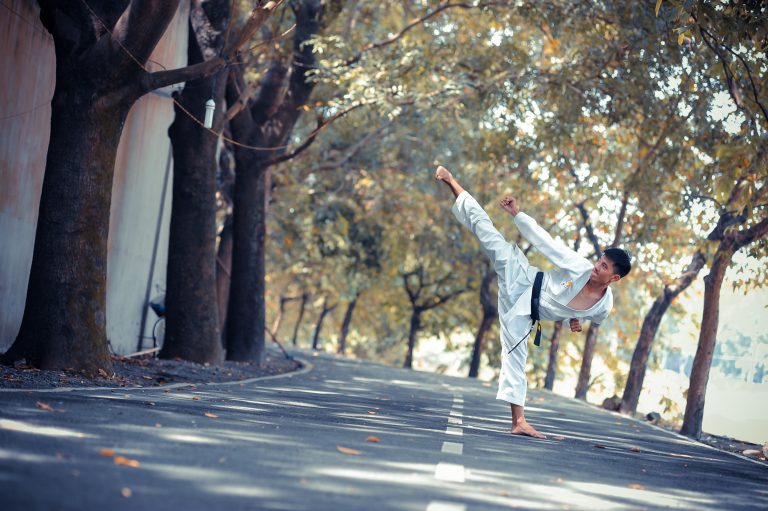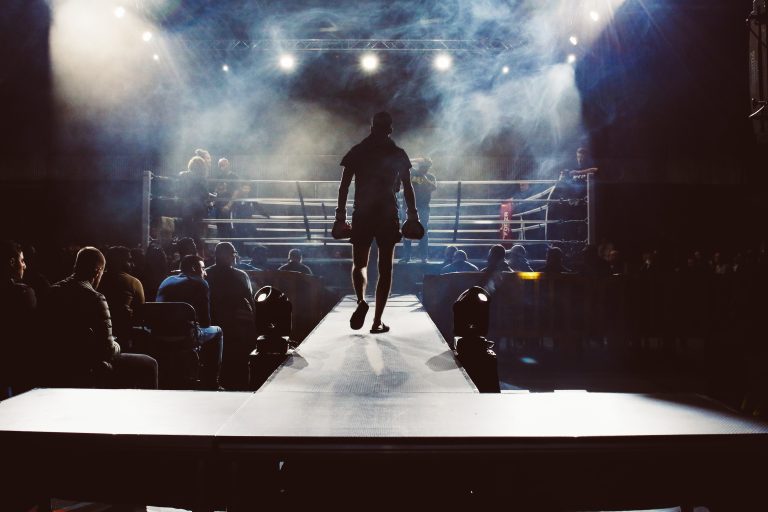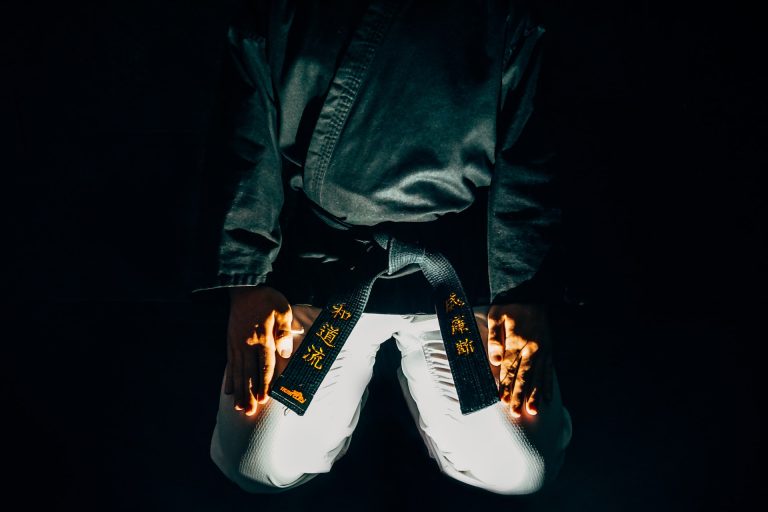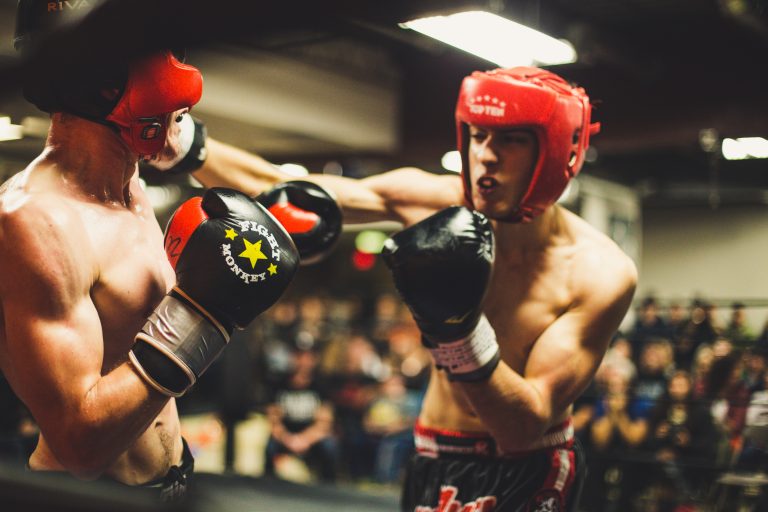Karate – The Different Types and Benefits
Karate is one of the oldest and most popular martial arts in the world. Originating in Okinawa, Japan hundreds of years ago, it’s a dynamic martial art with a rich history of culture, philosophy and spirituality. Karate is a comprehensive self-defence system and physical fitness activity that offers numerous health and psychological benefits, from developing your physical fitness to improving your emotional state. So what types of karate are there and how can it benefit you?
The Different Types of Karate
Karate is divided into two main categories – traditional (or sometimes known as classical) karate and sports karate. As the name implies, traditional karate is based on older forms of the art, such as those found in Okinawa or mainland Japan. This type of karate emphasizes technique and the mental aspects that make it a complete martial art. Sports karate, on the other hand, is based on the traditional forms but has been modified to bring out their competitive elements and make them suitable for tournaments. Here is a more in-depth look at the different types of karate:
Shōtōkan
Shōtōkan is one of the oldest types of karate and is a hybrid style that combines techniques from Okinawan karate and Chinese martial arts. It’s known for its use of strong blocks, strikes and kicks that emphasize speed and power, as well as its strong emphasis on kata (a form of prearranged attack and defense sequences).
Gojū-ryū
Gojū-ryū is an Okinawan hybrid style that combines hard linear techniques such as elbow strikes with softer circular movements. It’s characterized by its use of multiple blocks, punches and kicks while keeping its alignment and stances centered.
Shito-ryū
Shito-ryū is another Okinawan hybrid style that combines elements from many traditional martial arts styles such asShuri-te and Naha-te. It’s known for its use of wide stances, heavy blocks and strikes with strong focus on breathing.
Kyokushin
Kyokushin is a newer type of karate that was developed in the 1950s by Masutatsu Oyama. It emphasizes powerful punches, kicks, knees and elbows strikes and is known for its strong emphasis on physical conditioning and its full-contact fighting rules.
Wado-ryū
Wado-ryū was founded by Hironori Ōtsuka and combines elements of both Okinawan and Japanese styles. It’s characterized by its emphasis on natural body movement such as evasion, instead of relying on blocking and power to defend oneself.
Kyōdōken
Kyōdōken is a hybrid style that combines elements from both Shotokan and Jujutsu. Its primary focus is on grappling techniques such as throws and submission holds, but it also incorporates striking techniques like punches and kicks.
The Benefits of Practicing Karate
Karate offers numerous physical and psychological benefits that can help you become healthier and improve your overall wellbeing. Here are some of the main benefits of practicing karate:
Physical Fitness
Karate can help improve people’s physical fitness by helping them build strength, flexibility, coordination and balance. Practicing kata can also improve muscular endurance, mental focus and help build muscle mass.
Stress Relief
Karate offers an effective way to reduce stress and help practitioners relax both physically and mentally. Practicing self-defence techniques or taking part in tournaments can help release built-up tension with an outlet to channel your aggression in a healthy way.
Confidence Boost
Karate can provide an excellent platform to help boost your confidence in both physical confrontations and everyday situations. As you become more familiar with the techniques, you’ll gain a greater sense of self-assurance which can lead to improved performance in other areas of your life.
Self-Defence Skills
Karate provides an effective self-defence skill set that can come in handy in any situation where physical confrontation may arise. Through consistent practice, you can develop the knowledge needed to defend yourself effectively in a variety of situations, as well as learning to identify potentially dangerous situations before they occur.
Conclusion
Karate is one of the oldest martial arts in the world that has been around for centuries. With multiple different types ranging from traditional to sports, it provides a comprehensive self-defence system for practitioners who want to maintain their physical fitness as well as develop their confidence, self-discipline and alertness. By mastering the various techniques offered by karate classes, you can greatly improve both your physical condition and mental well-being while at the same time developing valuable self-defence skills that can be used throughout your daily life.
Karate – The Different Types and Benefits: Answering Your FAQs
Karate is a martial arts style that originated in Okinawa, Japan, during the Ryukyu Kingdom. Today, it is practiced all around the world and is known for its dynamic, explosive techniques that require speed, power, and precision. Here are the most frequently asked questions about the different types and benefits of karate.
1. What are the different types of karate?
Karate has many different styles, each with its unique techniques, training methods, and philosophies. Some of the most popular styles include:
Shotokan Karate
Shotokan is one of the most widely practiced karate styles in the world. It is characterized by its deep stances, linear movements, and powerful strikes.
Goju-ryu Karate
Goju-ryu is a karate style that combines hard and soft techniques to achieve a balance of power and control. It emphasizes breathing and circular movements and incorporates grappling and joint-locking techniques.
Shito-ryu Karate
Shito-ryu is a karate style that blends elements of Shotokan and Goju-ryu. It focuses on fluid, flowing movements and places a strong emphasis on kata, or prearranged sets of techniques.
Wado-ryu Karate
Wado-ryu is a karate style that blends karate techniques with principles of Japanese jujutsu. It emphasizes evasive movements and fluid footwork and focuses on using an opponent’s energy against them.
2. What are the benefits of practicing karate?
Karate offers several benefits for the mind and body. Here are some of the most notable ones:
Improved physical fitness
Karate is a great way to improve your cardiovascular health, strength, endurance, and flexibility. It requires a lot of energy and movement, making it an effective way to burn calories and tone your muscles.
Enhanced mental well-being
Karate requires discipline, focus, and concentration, all of which can enhance your mental well-being. It can also help you develop self-confidence and self-esteem as you master new techniques and progress through the ranks.
Effective self-defense skills
Karate teaches practical self-defense techniques that can help you protect yourself in real-world situations. You’ll learn how to defend against strikes, grapples, and weapons and how to use your body’s natural weapons (hands, feet, knees, elbows) to subdue an attacker.
Reduced stress and anxiety
Karate can be a great stress reliever, as it allows you to release tension and pent-up emotions through physical exercise. Its meditative aspects can also promote relaxation and mindfulness, reducing feelings of anxiety and depression.
3. Can anyone practice karate?
Yes, anyone can practice karate, regardless of age, gender, or fitness level. Karate classes cater to people of all abilities, and instructors can modify techniques or training methods to accommodate students‘ needs.
4. Do I need any special equipment to practice karate?
To practice karate, you will need a gi (a traditional karate uniform), a belt to indicate your rank, and protective gear, such as gloves, shin guards, and a mouthguard. These items can be purchased from martial arts supply stores or online retailers.
5. How long does it take to become proficient in karate?
Becoming proficient in karate takes time and dedication. The time it takes to progress through the ranks (which are typically indicated by colored belts) can vary depending on the style and school of karate. Generally, it takes several years to reach black belt level, and even then, there is always more to learn and improve upon.
6. Is karate a competitive sport?
Yes, karate can be a competitive sport, with tournaments and competitions held at the local, national, and international levels. Karate competitions typically involve sparring (using controlled strikes against a opponent) and kata (prearranged sets of techniques). The International Olympic Committee has also approved karate as an Olympic sport, with its debut in the 2020 Tokyo Olympic Games.
In conclusion, karate is a versatile martial art that offers many different styles and benefits for people of all ages and abilities. Whether you’re interested in improving your physical fitness, mental well-being, or self-defense skills, karate can be a rewarding and fulfilling pursuit. If you’re interested in trying karate, check out a local dojo or martial arts school and give it a try!
Inhaltsverzeichnis






